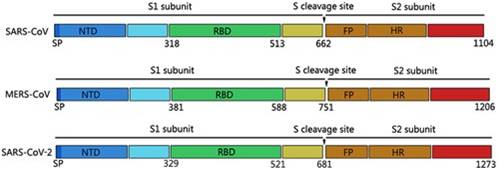Human CADM4 / IGSF4C / NECL-4 Recombinant Protein (Fc Tag)(Discontinued)
Shipping Info:
For estimated delivery dates, please contact us at [email protected]
| Amount : | 200 µg |
| Purification : | > 95 % as determined by SDS-PAGE. |
| Content : | Formulation Lyophilized from sterile PBS, pH 7.4. Normally 5 % - 8 % trehalose, mannitol and 0.01% Tween80 are added as protectants before lyophilization. |
| Storage condition : | Store it under sterile conditions at -20°C to -80°C. It is recommended that the protein be aliquoted for optimal storage. Avoid repeated freeze-thaw cycles. |
| AA sequence : | Met1-Tyr323 |
| Alternative Name : | IGSF4C Protein, Necl-4 Protein, NECL4 Protein, synCAM4 Protein, TSLL2 Protein, |
Source : HEK293 Cells
Immunoglobulin superfamily member 4C (IGSF4C), also known as CADM4 or NECL-4, is an immunoglobulin (Ig) superfamily molecule showing significant homology with a lung tumor suppressor, TSLC1. CADM4/IGSF4C/NECL-4 protein is mainly expressed in the kidney, bladder, and prostate in addition to the brain. Experiments have reported the biological significance of CADM4/IGSF4C/NECL-4 in the urinary tissues. An immunohistochemical study reveals that CADM4 is expressed at the cell-cell attachment sites in the renal tubules, the transitional epithelia of the bladder, and the glandular epithelia of the prostate. IGSF4-immunoreactivity (IR) was observed diffusely in the telencephalic wall, whereas it became rather confined to the subplate, the cortical plate and the subventricular zone as the development proceeded. IGSF4-IR gradually decreased after birth and disappeared in adulthood. IGSF4 remained at low levels throughout embryonic stage, whereas it increased after birth. These spatiotemporal patterns of the expression suggest that IGSF4 plays crucial roles in the development of both telencephalon and cerebellum. CADM4/IGSF4C/NECL-4 is ectopically expressed in adult T-cell leukemia (ATL) cells, providing not only a diagnostic marker for ATL, but also a possible therapeutic target against its invasion. The distinct roles of CADM4/IGSF4C/NECL-4 in the oncogenesis of carcinomas and ATL could be due to tissue-specific differences in the downstream cascades, and is a novel concept with respect to cell adhesion in human oncogenesis.
Immunoglobulin superfamily member 4C (IGSF4C), also known as CADM4 or NECL-4, is an immunoglobulin (Ig) superfamily molecule showing significant homology with a lung tumor suppressor, TSLC1. CADM4/IGSF4C/NECL-4 protein is mainly expressed in the kidney, bladder, and prostate in addition to the brain. Experiments have reported the biological significance of CADM4/IGSF4C/NECL-4 in the urinary tissues. An immunohistochemical study reveals that CADM4 is expressed at the cell-cell attachment sites in the renal tubules, the transitional epithelia of the bladder, and the glandular epithelia of the prostate. IGSF4-immunoreactivity (IR) was observed diffusely in the telencephalic wall, whereas it became rather confined to the subplate, the cortical plate and the subventricular zone as the development proceeded. IGSF4-IR gradually decreased after birth and disappeared in adulthood. IGSF4 remained at low levels throughout embryonic stage, whereas it increased after birth. These spatiotemporal patterns of the expression suggest that IGSF4 plays crucial roles in the development of both telencephalon and cerebellum. CADM4/IGSF4C/NECL-4 is ectopically expressed in adult T-cell leukemia (ATL) cells, providing not only a diagnostic marker for ATL, but also a possible therapeutic target against its invasion. The distinct roles of CADM4/IGSF4C/NECL-4 in the oncogenesis of carcinomas and ATL could be due to tissue-specific differences in the downstream cascades, and is a novel concept with respect to cell adhesion in human oncogenesis.
Endotoxin :< 1.0 EU per µg protein as determined by the LAL method.
For Research Use Only. Not for use in diagnostic/therapeutics procedures.
|
There are currently no product reviews
|















.png)









